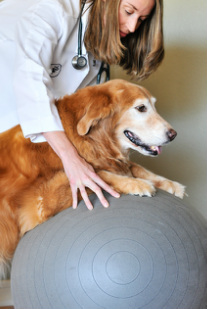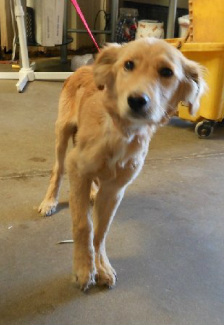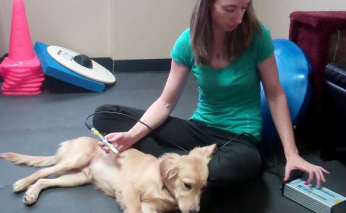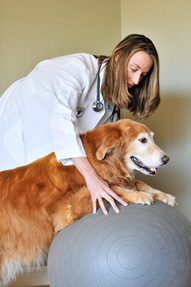
Today’s topic is the General Adaptation Syndrome. I know it’s exciting. I could barely sit still too when I learned about it, but please, take your seat. Thank you. Shall we continue, class?
Okay, the general adaptation syndrome, or as it is more commonly known on the streets, the “use it or lose it” principle, essentially describes how the body responds and adapts to stress. Some form of adaptation is the goal of most fitness, conditioning, weight loss, or physical rehabilitation programs. I want your dog’s body to adapt to the good stress of the exercise and increased demands placed on it. I want to induce an increase in strength, an increase in muscle size, an increase in muscular endurance, an increase in stability, an increase in flexibility, or an increase in power. Many times a combination of these is my goal when I design your dog’s specific rehab plan following injury or illness. These same rules are used for designing programs to improve athletic conditioning for dog sports like dockdiving, flyball, agility, and more! What dog, athlete or senior, doesn't benefit from being faster, stronger and having better balance and flexibility?
Your dog’s body (and yours too) is amazing in its ability to respond and adapt to the stresses placed on it. Ask your dog’s body to do more and you will get more!The same is true in reverse too, . Slack off, for even as few as 2 weeks, and you will see the body start to regress. It’s simply not efficient to maintain something that’s not being used. Get back at it and the body will adapt again. Incredible! I love it! Using this idea, you can see that it’s never too late to improve your dog’s overall health and fitness!
Okay, the general adaptation syndrome, or as it is more commonly known on the streets, the “use it or lose it” principle, essentially describes how the body responds and adapts to stress. Some form of adaptation is the goal of most fitness, conditioning, weight loss, or physical rehabilitation programs. I want your dog’s body to adapt to the good stress of the exercise and increased demands placed on it. I want to induce an increase in strength, an increase in muscle size, an increase in muscular endurance, an increase in stability, an increase in flexibility, or an increase in power. Many times a combination of these is my goal when I design your dog’s specific rehab plan following injury or illness. These same rules are used for designing programs to improve athletic conditioning for dog sports like dockdiving, flyball, agility, and more! What dog, athlete or senior, doesn't benefit from being faster, stronger and having better balance and flexibility?
Your dog’s body (and yours too) is amazing in its ability to respond and adapt to the stresses placed on it. Ask your dog’s body to do more and you will get more!The same is true in reverse too, . Slack off, for even as few as 2 weeks, and you will see the body start to regress. It’s simply not efficient to maintain something that’s not being used. Get back at it and the body will adapt again. Incredible! I love it! Using this idea, you can see that it’s never too late to improve your dog’s overall health and fitness!




 RSS Feed
RSS Feed